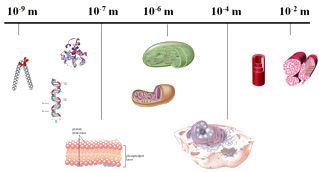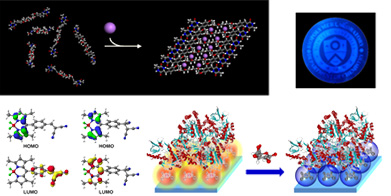
Design of Self-Assembled Functional Materials
Self-assembly is one of fundamental processes in biological system.From the smallest protein molecules to large organs, all biological systems are formed by self-assembly processes.Such self-assembly processes become the best model for bottom up strategy for the materials design.We are currently developing various molecular building blocks for the construction of well-ordered nano-structure.

Porphyrin-Based Biomimetic Functional Materials
Various forms of porphyrin derivatives exist in bio-organism to carry out very important roles, such as photosynthesis, oxygen transport, and site-specific catalysis.Currently, we are going to develop porphyrin-based functional materials as the mimic of biosystems and biological processes.Throughout our investigation, we are going to realize efficient artificial light harvesting antenna systems, artificial receptors for specific chemical species, and stimuli responsive nano-devices.Such biomimetic materials may become the important model system for the understanding of biological phenomena.And also, mimicry of biological system will give great advantages in the energy efficiency.

Functional Stimuli-Responsive Materials
The molecules or their assemblies having stimuli-responsiveness will provide various applications in materials chemistry, such as chemical sensors, molecular actuators, and data storage devices.We are continuously paying efforts to develop various types of stimuli-responsive materials.Both physical changes, include light, thermal energy, electric, and magnetic fields, and chemical changes, include pH changes, ion strength, and specific chemicals, can be utilized for the design of functional stimuli-responsive materials.

Biomedical Applications of Functional Nanodevices
We are going to develop various types of biofunctional nano-devices including polymer-based drug delivery systems, diagnostic tools, and biosensors.Biomedical application would be the ultimate goal for materials science.For the design of effective drug delivery systems, we are going to combine various aforementioned strategies, such as stimuli-responsive system, self-assembly technology, and bio-mimicry.
